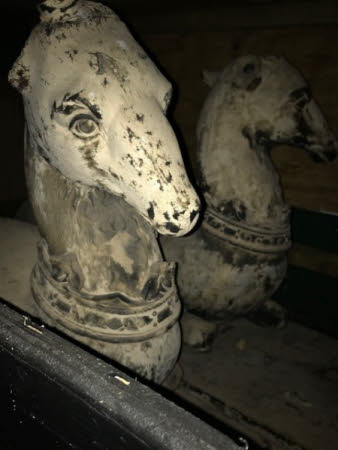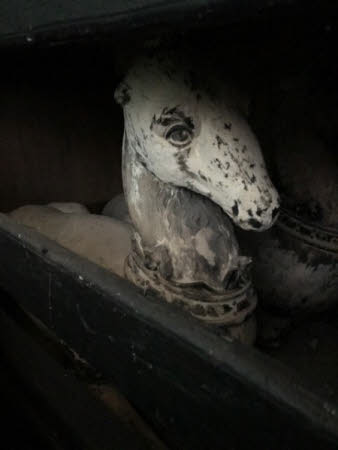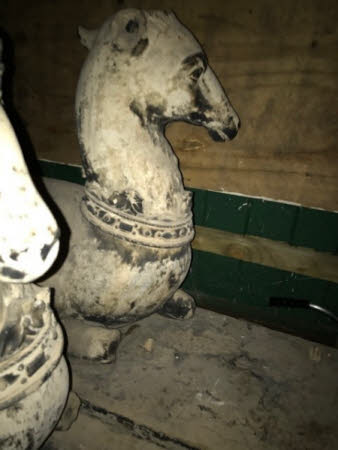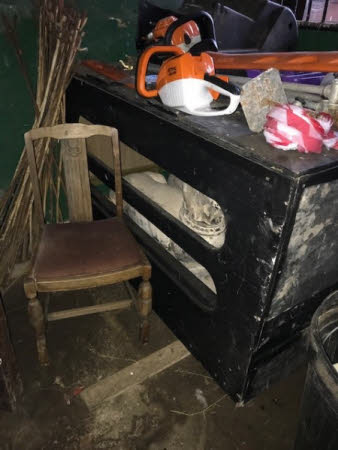A pair of recumbent antelope
Coade
Category
Art / Sculpture
Date
1794
Materials
Coade stone
Measurements
800 mm (Height); 1040 mm (Length)
Place of origin
Lambeth
Order this imageCollection
Kedleston Hall, Derbyshire
NT 109016
Summary
Coade Stone, a pair of recumbent antelope, Coade's Artificial Stone Manufactory, Lambeth, London, 1794. A pair of recumbent antelope, wearing jeweled collars, carved of Coade's Artificial Stone, with traces of paint; mounted on Coade's Stone plinths which are significantly longer than the antelope, the animals are placed approximately a third of the way down the length of the plinth. Signed and dated 'Coade Lambeth 1794'. Significantly weathered and damaged: a forelimb and both hind legs has broken off each of the antelope; there is significant plinth damage to one of the antelope; both ears and horns and top of head have broken off one of the animals and one of the ears and both horns have broken off the other.
Full description
The antelope were part of the stock-in-trade of Coade's Artificial Stone Manufactory, Lambeth. They appear to have been sold as 'Antelope, couchant', with plinth, as early as 1784 (see 'A descriptive catalogue of Coade's artificial stone manufactory at King's Arms stairs, narrow-wall, Lambeth', 1784, p. 4, no. 52). Coade stone is a type of twice-baked stoneware used in the late 18th and 19th centuries for the production of neo-classical statuary, architectural sculpture and ornaments. It was developed by Eleanor Coade (1733-1821), the entrepreneur who perfected existing clay recipes and firing processes to produce a new high-quality artificial stone which was mouldable, durable and virtually weather-resistant. In 1769 Coade established a manufactory in Lambeth and quickly dominated the market, receiving a royal appointment from George III and the Prince Regent. Coade Stone can be seen at many National Trust properties, including Ham House (Father Thames, NT 1140390), Basildon Park (Capitoline Flora, NT 266941) and Anglesey Abbey (Amphora, NT 516626). For other Coade stone at Kedleston see NT 109017.1 and NT 109017.2, reproductions of the celebrated antique krater, the Borghese and Medici Vases, and NT 109000.1 and NT 109000.2, medallions with relief portraits of Kings Ethelred and Alfred the Great. Alice Rylance-Watson 2019
Provenance
Probably purchased by Nathaniel Curzon, 1st Baron Scarsdale (1726-1804), c. 1794; purchased with part of the contents of Kedleston with the aid of the National Heritage Memorial Fund in 1987 when the house and park were given to the National Trust by Francis Curzon, 3rd Viscount Scarsdale (1924-2000).
Credit line
Kedleston Hall, The Scarsdale Collection (acquired with the help of the National Heritage Memorial Fund and transferred to The National Trust in 1987)
Makers and roles
Coade, manufacturer
References
Kelly 1990: Alison Kelly, Mrs Coade's stone, Upton-upon-Severn 1990




